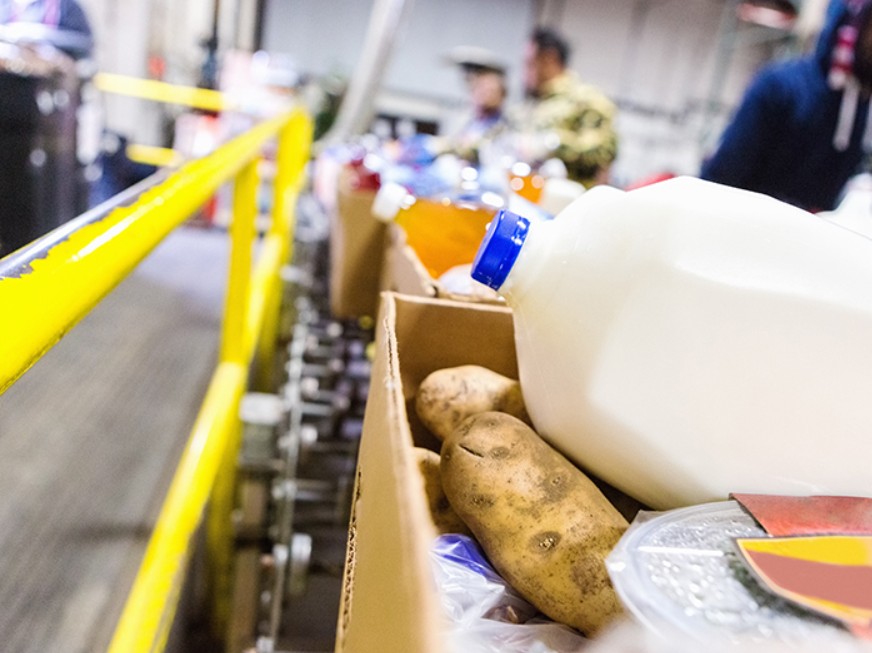A five-year partnership between Nationwide Insurance and KINETIC Technology is helping reduce workplace injuries through wearable sensors, with the Mid-Ohio Food Collective serving as a successful implementation case study that demonstrates how smart technology can improve worker safety in physically demanding environments.
Nationwide Insurance and KINETIC have formed a strategic partnership aimed at reducing workplace injuries through innovative wearable technology. The collaboration, now in its fourth year, originated from Nationwide’s broader mission to make workplaces safer across America.
“Nationwide and KINETIC are now in our fourth market cycle of bringing this product to market,” explains Dale Hoppe, Sr AVP of Workers’ Compensation Programs at Nationwide E&S/Specialty. “As Nationwide seeks to grow our footprint in workers’ compensation, value-added products and services are at the forefront of our market strategy.”
The partnership aligns with Nationwide’s goal to eliminate one million workplace injuries by 2030. This initiative reflects the insurance company’s commitment to protection that extends beyond financial coverage to actively preventing workplace accidents.
The Mid-Ohio Food Collective, which distributes approximately 85 million pounds of food annually through 680 agencies across a 20-county area, was an ideal candidate for implementing this safety technology. The organization’s commitment to worker safety made it receptive to innovative approaches that could further enhance their already strong safety culture.
Rob Camp, SVP Operations at Mid-Ohio Food Collective, notes: “As a food collective, we’ve always maintained a strong focus on safety, resulting in historically low workers’ compensation claims. However, the KINETIC device presented an opportunity to enhance our safety measures even further.”
The nonprofit identified several high-risk worker categories for the program, including warehouse workers, truck drivers delivering food across their territory, van drivers distributing meals to schools, and kitchen staff—each facing unique occupational challenges that the wearable technology could address.
Wearable Technology Provides Real-Time Safety Feedback
The centerpiece of this workplace safety initiative is KINETIC’s wearable sensor device that uses artificial intelligence to monitor body movements and provide immediate feedback to workers when they perform potentially harmful motions.
Stephen Horning, SVP of Enterprise Sales and Customer Success at KINETIC, describes their technology: “KINETIC is a workers’ comp provider leveraging smart technology and artificial intelligence. Our primary tool is a wearable sensor device that runs a machine learning algorithm to understand body movements.”
The small device is worn at the hip line, clipped onto a belt, and contains sophisticated technology including an inertial measurement unit and gravity sensors that detect orientation and analyze movement patterns. The sensors specifically track four key motions that commonly lead to workplace injuries: lifts, bends, twists, and jumps.
What makes the technology particularly effective is its real-time feedback mechanism. “The device’s placement on the hip enables a crucial real-time feedback mechanism through vibration alerts,” Hoppe explains. “When it detects ergonomic concerns, it immediately buzzes to notify workers that they’ve performed a potentially unsafe movement.”
This immediate feedback creates a continuous learning environment that reinforces proper body mechanics. Rather than relying solely on periodic training sessions, workers receive instant reminders throughout their workday when they engage in potentially risky movements.
The data collected by the devices is transmitted to a dashboard that allows management to monitor movement patterns across their workforce. At Mid-Ohio Food Collective, the organization deployed 48 devices and achieved an impressive 88% utilization rate, well above the target threshold of 65%.
“We share results weekly with both leadership and individual contributors,” Horning notes. “Leadership receives comprehensive data, while we’ve increasingly started sharing specific metrics with device wearers, such as improvements in high-risk postures and changes in jump frequency.”
Positive Impact on Workers and Safety Culture
The implementation of KINETIC’s wearable technology at Mid-Ohio Food Collective has yielded significant benefits for workers and the organization’s safety culture. The technology has raised awareness about potentially dangerous movements and helped workers become more mindful of their body mechanics.
“The implementation of these wearable devices has yielded notable improvements in workplace safety,” Camp reports. “The devices help team members become more conscious of their movements, particularly those subtle motions that could potentially cause back or shoulder strain. This increased awareness has fostered an even stronger safety mindset among our workforce.”
Data from the wearable devices revealed that Mid-Ohio Food Collective was already performing well in terms of safety practices, with substantial decreases in potentially risky movements like bends and jumps after implementation. This positive feedback reinforced the organization’s commitment to worker wellbeing.
The organization took a thoughtful approach to communicating the data with employees, sharing aggregate information while maintaining individual privacy. “We were careful to emphasize that we tracked aggregate movement patterns rather than monitoring individual employees, focusing on opportunities for improvement rather than surveillance,” explains Camp.
Some worker groups, such as the kitchen team, faced greater challenges in modifying their movements due to the nature of their work. The organization addressed these challenges by providing contextualized feedback and focusing on incremental improvements rather than unrealistic expectations.
The partnership has broader significance beyond workplace safety. As Camp notes, “Our team members are essential to our mission of serving hungry neighbors, and their safety and well-being are paramount to our operations. Without their dedicated service, we couldn’t fulfill our vital community role.”
The success of this implementation at Mid-Ohio Food Collective has prompted discussions about expanding the technology to other nonprofits. Hoppe indicates that “Nationwide plans to evaluate the success and learnings from our work with Rob and their team. This evaluation will help determine potential expansion opportunities in areas where Nationwide has an established presence.”
The collaboration represents a model for how technology partnerships can address workplace safety challenges while supporting important community services. As Horning concludes, “This partnership represents a significant collaboration in the distribution and production sector. The opportunity to extend our technology and expertise to Mid-Ohio Food Collective has been exceptional.” &







